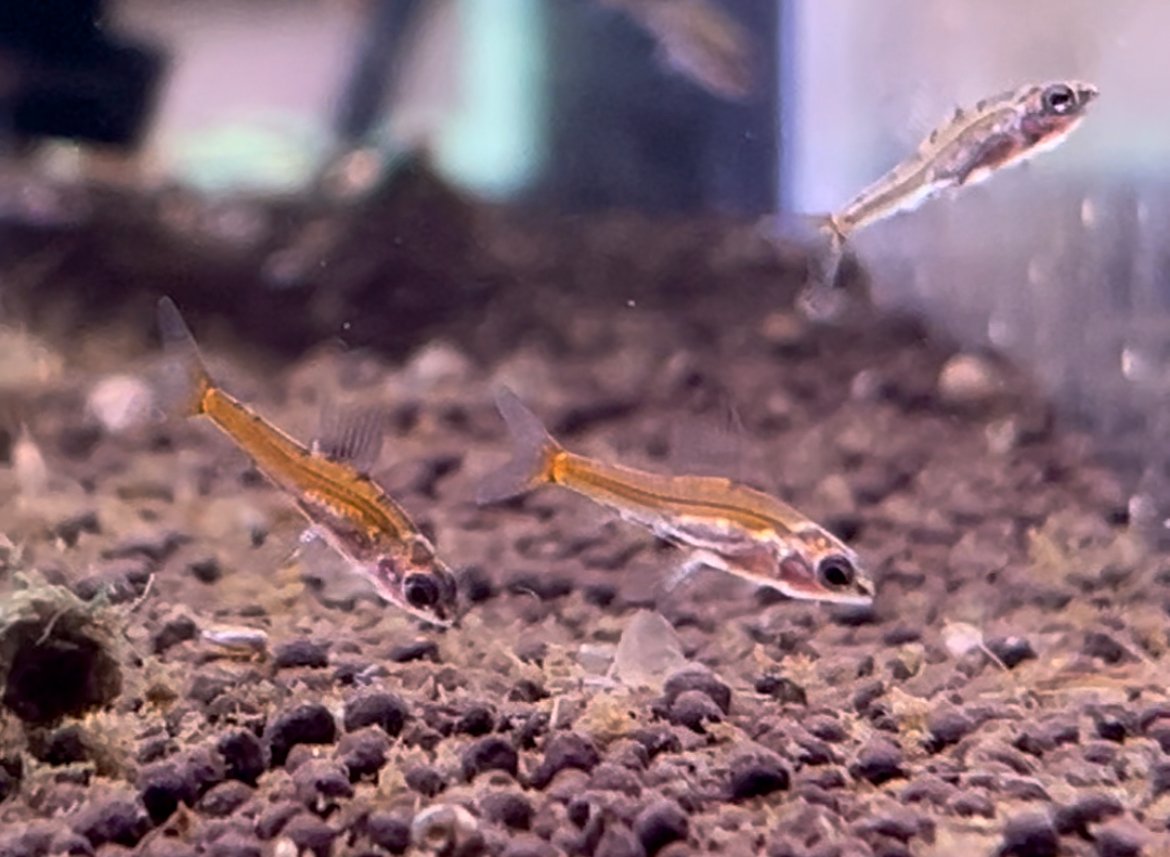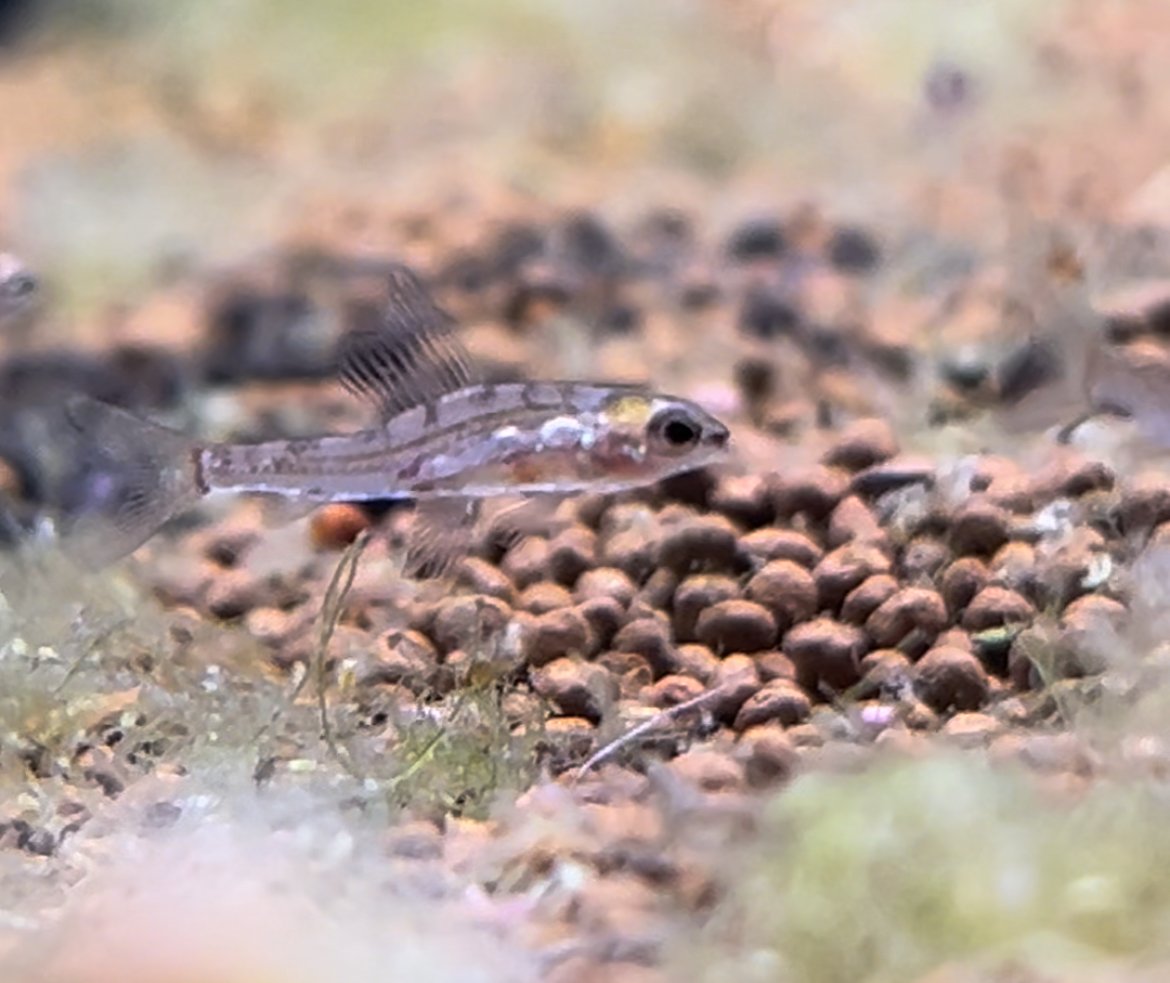 Image 1 of 2
Image 1 of 2

 Image 2 of 2
Image 2 of 2



Lemon Tetra
The Lemon Tetra, scientifically known as Hyphessobrycon pulchripinnis, is a vibrant freshwater fish species native to the Amazon River basin in South America, specifically found in Brazil and Peru. In their natural habitat, they inhabit slow-moving waters, tributaries, and flooded forest areas of the Amazon basin.
Characterized by their striking lemon-yellow coloration, elongated body shape, and transparent fins, Lemon Tetras typically reach a size of about 1.5 to 2 inches (3.8-5 cm). Their vibrant appearance adds a lively touch to community aquariums.
In the wild, Lemon Tetras thrive in well-planted aquariums with areas for swimming and hiding spots provided by plants and driftwood. They prefer soft to slightly hard water conditions, and maintaining a stable and clean environment with proper filtration contributes to their overall well-being.
Known for their peaceful nature and schooling behavior, Lemon Tetras are suitable for community aquariums. Keeping them in groups of six or more enhances their sense of security. They are active swimmers and look stunning in a well-lit tank.
Feeding Lemon Tetras is relatively easy, as they are omnivores. A varied diet that includes high-quality flakes, pellets, and occasional live or frozen foods meets their nutritional needs. Providing a balanced diet enhances their coloration and overall health.
Maintaining water conditions within the range of 72-78°F (22-26°C) and a pH level between 5.0 to 7.0 is advisable. Regular water changes and proper filtration contribute to their health and vitality.
Breeding Lemon Tetras in captivity is possible. Creating a separate breeding tank with soft, acidic water and fine-leaved plants for egg deposition encourages successful spawning. After spawning, it's recommended to remove the adults to prevent them from consuming the eggs.
In summary, the Lemon Tetra is a vibrant and captivating addition to freshwater aquariums, known for its striking lemon-yellow coloration and peaceful demeanor. Recreating their natural habitat from the Amazon River basin and adhering to proper care conditions contribute to their well-being in captivity.
The Lemon Tetra, scientifically known as Hyphessobrycon pulchripinnis, is a vibrant freshwater fish species native to the Amazon River basin in South America, specifically found in Brazil and Peru. In their natural habitat, they inhabit slow-moving waters, tributaries, and flooded forest areas of the Amazon basin.
Characterized by their striking lemon-yellow coloration, elongated body shape, and transparent fins, Lemon Tetras typically reach a size of about 1.5 to 2 inches (3.8-5 cm). Their vibrant appearance adds a lively touch to community aquariums.
In the wild, Lemon Tetras thrive in well-planted aquariums with areas for swimming and hiding spots provided by plants and driftwood. They prefer soft to slightly hard water conditions, and maintaining a stable and clean environment with proper filtration contributes to their overall well-being.
Known for their peaceful nature and schooling behavior, Lemon Tetras are suitable for community aquariums. Keeping them in groups of six or more enhances their sense of security. They are active swimmers and look stunning in a well-lit tank.
Feeding Lemon Tetras is relatively easy, as they are omnivores. A varied diet that includes high-quality flakes, pellets, and occasional live or frozen foods meets their nutritional needs. Providing a balanced diet enhances their coloration and overall health.
Maintaining water conditions within the range of 72-78°F (22-26°C) and a pH level between 5.0 to 7.0 is advisable. Regular water changes and proper filtration contribute to their health and vitality.
Breeding Lemon Tetras in captivity is possible. Creating a separate breeding tank with soft, acidic water and fine-leaved plants for egg deposition encourages successful spawning. After spawning, it's recommended to remove the adults to prevent them from consuming the eggs.
In summary, the Lemon Tetra is a vibrant and captivating addition to freshwater aquariums, known for its striking lemon-yellow coloration and peaceful demeanor. Recreating their natural habitat from the Amazon River basin and adhering to proper care conditions contribute to their well-being in captivity.
The Lemon Tetra, scientifically known as Hyphessobrycon pulchripinnis, is a vibrant freshwater fish species native to the Amazon River basin in South America, specifically found in Brazil and Peru. In their natural habitat, they inhabit slow-moving waters, tributaries, and flooded forest areas of the Amazon basin.
Characterized by their striking lemon-yellow coloration, elongated body shape, and transparent fins, Lemon Tetras typically reach a size of about 1.5 to 2 inches (3.8-5 cm). Their vibrant appearance adds a lively touch to community aquariums.
In the wild, Lemon Tetras thrive in well-planted aquariums with areas for swimming and hiding spots provided by plants and driftwood. They prefer soft to slightly hard water conditions, and maintaining a stable and clean environment with proper filtration contributes to their overall well-being.
Known for their peaceful nature and schooling behavior, Lemon Tetras are suitable for community aquariums. Keeping them in groups of six or more enhances their sense of security. They are active swimmers and look stunning in a well-lit tank.
Feeding Lemon Tetras is relatively easy, as they are omnivores. A varied diet that includes high-quality flakes, pellets, and occasional live or frozen foods meets their nutritional needs. Providing a balanced diet enhances their coloration and overall health.
Maintaining water conditions within the range of 72-78°F (22-26°C) and a pH level between 5.0 to 7.0 is advisable. Regular water changes and proper filtration contribute to their health and vitality.
Breeding Lemon Tetras in captivity is possible. Creating a separate breeding tank with soft, acidic water and fine-leaved plants for egg deposition encourages successful spawning. After spawning, it's recommended to remove the adults to prevent them from consuming the eggs.
In summary, the Lemon Tetra is a vibrant and captivating addition to freshwater aquariums, known for its striking lemon-yellow coloration and peaceful demeanor. Recreating their natural habitat from the Amazon River basin and adhering to proper care conditions contribute to their well-being in captivity.








